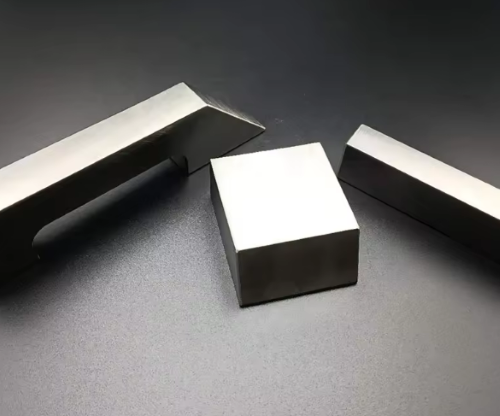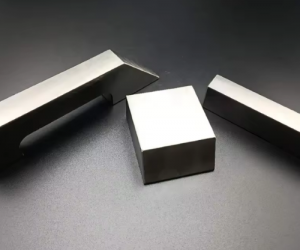Something to Know about Bucking Bar Materials

Introduction
Bucking bars are fundamental tools in various industries, particularly in the aerospace, automotive, and manufacturing sectors, where riveting is a common practice. These tools ensure the integrity and strength of joints by providing the necessary counterforce during rivet setting. Understanding the features, different materials, and industrial applications of bucking bars is essential for optimizing riveting processes and achieving superior results.

Bucking Bar Materials: Features and Benefits
Bucking bars are typically made from dense and durable materials that can withstand high impact forces without deforming. The primary mechanism involves applying pressure to the opposite side of the rivet being set, allowing the rivet to be formed properly. Key properties of bucking bar materials include:
- Density: Higher density materials, such as tungsten alloys, provide better energy transfer during riveting, resulting in more efficient joint formation.
- Hardness: Materials with high hardness, like tool steels, resist deformation and wear, prolonging the lifespan of the bucking bar.
- Weight: Lightweight materials, such as aluminum alloys, reduce operator fatigue during prolonged use.
- Corrosion Resistance: In corrosive environments, materials like titanium offer superior protection against degradation, ensuring long-term durability.
Comparative Analysis of Bucking Bar Materials
These essential tools provide the necessary counterforce to shape and secure rivets. Commonly used bucking bar materials include steel, tungsten, aluminum, composites, and others for specific tasks.
1. Steel:
Known for their durability and affordability, steel alloys are versatile and widely used in various riveting applications. They offer excellent resistance to deformation, making them suitable for general-purpose riveting tasks.
However, steel bucking bars are relatively heavy compared to other materials, which can lead to operator fatigue during prolonged use. Additionally, steel does not provide as much vibration damping as tungsten, which may affect precision riveting in some applications.
2. Tungsten Alloys:
Tungsten alloys boast exceptional density and vibration damping properties, making them ideal for precision riveting in aerospace and high-performance manufacturing. Their high density ensures efficient energy transfer during riveting, resulting in precise joint formation and enhanced structural integrity.
Nevertheless, tungsten bucking bars can be expensive compared to other materials, increasing the overall cost of riveting operations. Moreover, their weight may also contribute to operator fatigue during extended use.
3. Aluminum Alloys:
Lightweight and corrosion-resistant, aluminum alloys are favored for applications where operator comfort and maneuverability are crucial. Their lightweight nature reduces operator fatigue during prolonged use, making them suitable for repetitive riveting tasks.
However, aluminum bucking bars may lack the durability and hardness of steel and tungsten alloys, making them less suitable for heavy-duty riveting applications. It is also prone to deformation under high impact forces, limiting its longevity in certain environments.
4. Titanium:
Titanium offers an excellent strength-to-weight ratio and superior corrosion resistance, making it ideal for aerospace and marine applications. Its exceptional durability ensures long-term performance in harsh environments, contributing to the longevity of riveted joints.
However, titanium bucking bars can be expensive and challenging to machine, increasing manufacturing costs and complexity. Besides, titanium is not as readily available as other materials, which may limit its widespread adoption in certain industries.
Each bucking bar material offers unique characteristics and advantages (See Table 1), catering to different requirements and preferences in riveting operations. Steel provides durability and affordability, while tungsten offers precision and vibration damping. Aluminum prioritizes lightweight design and corrosion resistance, while composites offer a balance of strength and weight. Advanced Refractory Metals (ARM), boasting two decades of expertise, specializes in crafting and supplying premium tungsten bucking bars in diverse shapes and sizes for industrial applications.
Table 1 How to Choose Bucking Bar Materials
| Material | Strengths | Weaknesses |
| Steel | - Durability - Affordability - Resistance to deformation | - Relatively heavy - Limited vibration damping |
| Tungsten Alloys | - Density - Vibration damping - Precision riveting | - Expensive - Weight may cause fatigue |
| Aluminum Alloys | - Lightweight -Corrosion resistance | - Less durable - Prone to deformation - Less suitable for heavy-duty applications |
| Titanium | - Strength-to-weight ratio - Corrosion resistance | - Expensive - Challenging to machine- Limited availability |
Advanced Materials for Bucking Bars
Advancements in materials science have led to the development of innovative materials for bucking bars, including:
- Composite Materials: Composite bucking bars combine properties of different materials to offer a balance of strength, weight, and fatigue resistance. They are ideal for high-volume production and repetitive riveting tasks, where operator comfort is essential.
- Shape Memory Alloys: Shape memory alloys exhibit unique properties, such as shape recovery after deformation, making them suitable for specialized riveting applications requiring precise control and repeatability.
- Nanomaterials: Engineered at the molecular level, nanomaterials offer unprecedented strength and durability, paving the way for next-generation bucking bars with superior performance and longevity.
Industrial Applications of Bucking Bar Materials
Bucking bars are essential tools used in various industries, especially in metalworking and aircraft manufacturing. They serve several important purposes, primarily in riveting operations. Here are some common applications of bucking bars:
- Riveting: Bucking bars are most commonly used in conjunction with rivet guns. When riveting, one side of the rivet is inserted into a pre-drilled hole in the materials being joined, while the other side is secured by a bucking bar. The rivet gun is then used to deform the unsecured end of the rivet, creating a second head that holds the materials together. The bucking bar is placed against this unsecured end to provide a solid backing surface for the rivet to form properly.
- Aircraft Manufacturing: In the aerospace industry, bucking bars are extensively used during aircraft assembly. They are crucial for securing panels, frames, and other structural components together using rivets. The high-strength materials and precise construction of bucking bars make them ideal for use in aircraft manufacturing, where safety and durability are paramount.
- Sheet Metal Work: Bucking bars are also commonly used in sheet metal work, such as in automotive and HVAC (heating, ventilation, and air conditioning) industries. They provide the necessary support for rivet installation in thin metal sheets, ensuring a tight and secure fit.
- Repair and Maintenance: Bucking bars are not only used in manufacturing but also in repair and maintenance operations. When repairing aircraft or other metal structures, rivets may need to be replaced or installed. Bucking bars facilitate these tasks by providing the necessary support for rivet installation, even in tight or difficult-to-reach spaces.
- Welding Support: In addition to riveting, bucking bars can be used as backing bars in welding applications. They help support the weld joint, preventing distortion and ensuring proper fusion between the metal pieces being welded together.
- Shaping and Forming: Bucking bars can also be used in shaping and forming operations, where they are employed as backing surfaces for hammering or forming metal into specific shapes or contours.
Conclusion
In a word, mastering bucking bar materials, including steel, tungsten, aluminum, etc. is essential for optimizing riveting processes. As advancements in materials science continue, the potential for innovation in bucking bar materials remains limitless, offering exciting possibilities for future development and improvement in manufacturing processes.
{{item.content}}
LEVE A REPLY
{{item.children[0].content}}
{{item.content}}






